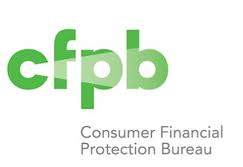Last night, the Consumer Financial Protection Bureau (CFPB) released its Larger Non- Bank Participant Rule. The Rule is available here. In addition to releasing the Rule, the CFPB released an examination manual and a fact sheet.
Bank Participant Rule. The Rule is available here. In addition to releasing the Rule, the CFPB released an examination manual and a fact sheet.
Some highlights:
- The Rule is effective January 2, 2013 — 70 days from today.
- The Rule provides a description of the examination process.
- It does not apply to entities that originate credit.
- A person is subject to the Rule if they have more than $10 million in “annual receipts” resulting from consumer debt collection.
- “Annual receipts” is derived from a three-year average of receipts.
- “Annual receipts” does not include “those receipts that result from collecting debts that were originally owed to a medical provider.”
- The types of entities the Rule covers are expected to be third-party debt collectors, debt buyers, and collection attorneys.
- “Consumer debt collection” has been revised from the proposed rule to now mean “debts incurred by consumers primarily for personal, family, or household purposes related to consumer financial products or services.”
The Rule impacts small businesses and law firms.
If your law firm or business provides services to a Larger Participant’s “consumer debt collection” activities, the Rule affects you, regardless of the amount of your “annual receipts.” Earlier this year, the CFPB issued a bulletin stating it will supervise “service providers.” A “service provider” is “any person that provides a material service” to certain insured depository institutions, credit unions or non-bank, Larger Participants, “in connection with” their “offering of a consumer financial product or service.” The CFPB Service Provider Bulletin warns of “on-site” examinations of service providers and that the CFPB can take enforcement action against service providers “as appropriate.”
If you are a service provider to insured depository banks or credit unions, you may already be subject to the CFPB Service Provider Bulletin. If you do not provide services to banks and credit unions, your clients may now be Larger Participants and, very soon, you too may be subject to CFPB supervision, examination and enforcement. There is little doubt that the examination process will follow that outlined in the examination manual for Larger Participants.
The trick will be determining whether any of your clients are Larger Participants and whether your relationship with your client includes the provision of a “material service” to the Larger Participant’s “consumer debt collection” activity.

